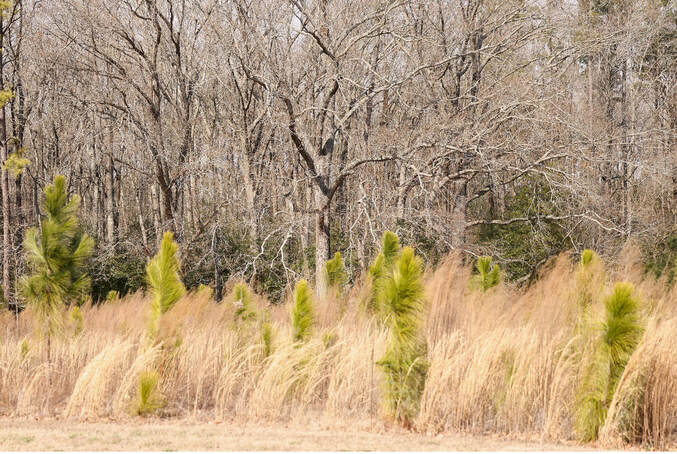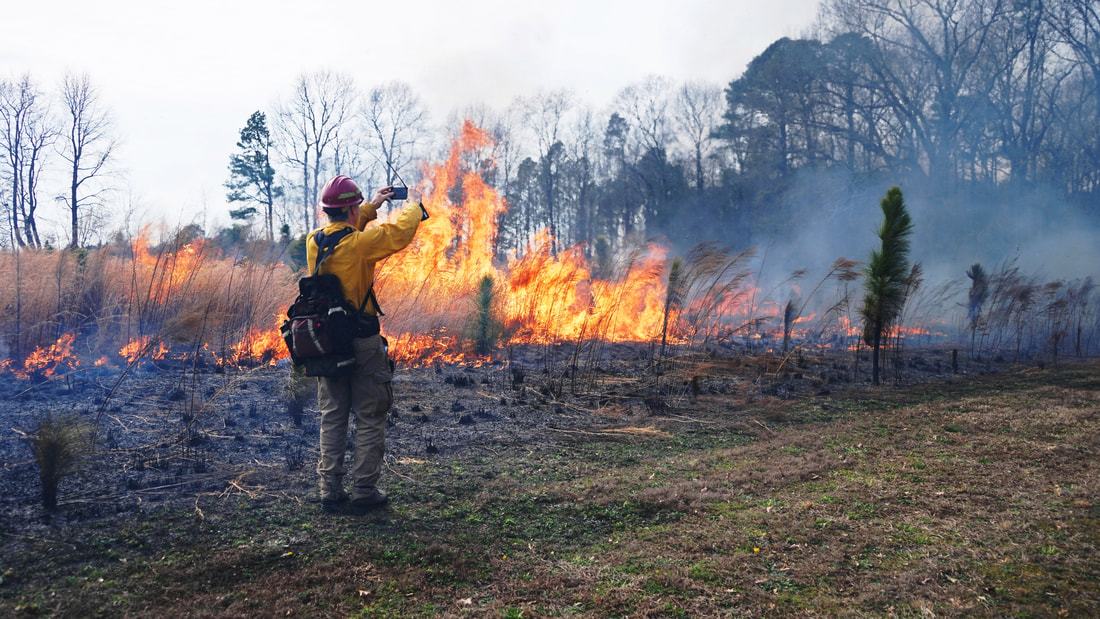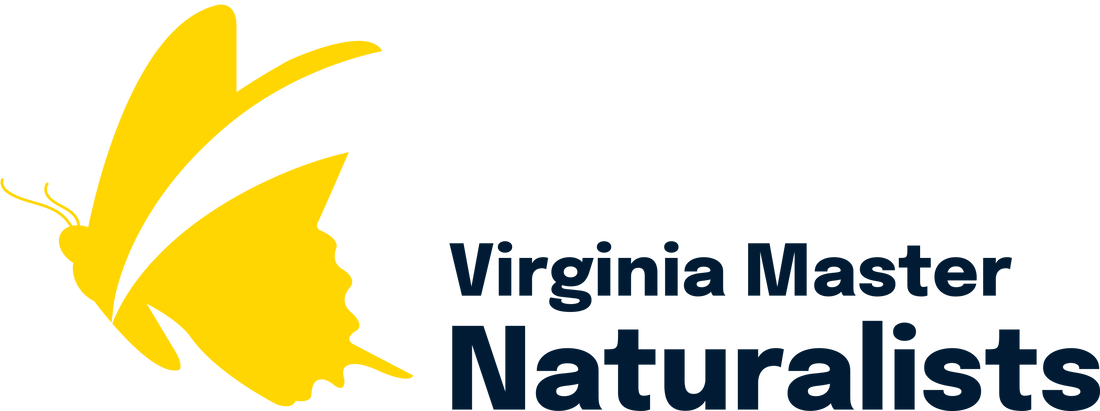Fire, an age-old land management tool, is still a positive tool when used properly and to accomplish certain objectives. Without something to keep succession at bay, a meadow becomes a forest. Frequent fire is a form of natural disturbance that favors early successional species such as native warm-season grasses and discourages the establishment of later succession species such as trees. In some cases, though, prescribed fire promotes regeneration of certain tree species, such as in the case of the longleaf pine, where fire prepares a bare mineral soil seedbed needed for seed germination, or in the case of the Table Mountain pine, a species that requires fire for regeneration due to its serotinous cones (cones that require extreme heat to open.) The use of prescribed fire also shows promise for the regeneration and management of oaks.
This winter and spring, VMN volunteers took part in two prescribed burns, described below, at sites where they regularly do educational and stewardship programs.
REMINDER: 4 PM burn law is in effect from Feb 15 to April 30 each year. Spring is peak wildfire season. Prescribed burns should only be undertaken by those with training and experience. https://dof.virginia.gov/wildland-prescribed-fire/
This winter and spring, VMN volunteers took part in two prescribed burns, described below, at sites where they regularly do educational and stewardship programs.
REMINDER: 4 PM burn law is in effect from Feb 15 to April 30 each year. Spring is peak wildfire season. Prescribed burns should only be undertaken by those with training and experience. https://dof.virginia.gov/wildland-prescribed-fire/
 Burning the meadow at the demonstration forest at James Madison's Montpelier. Photo by Adam Downing, VCE.
Burning the meadow at the demonstration forest at James Madison's Montpelier. Photo by Adam Downing, VCE. Prescribed Burn at the Working Woods Site at James Madison's Montpelier
Virginia Master Naturalists have partnered with Virginia Cooperative Extension for many years to provide educational walks at a forestry demonstration area on the grounds of James Madison's Montpelier. The site shows various forest management techniques, including maintaining early successional habitat (meadow) for wildlife. To keep the meadow as meadow requires occasional prescribed burns, such as the one initiated in April 2024. Forestry and Natural Resources Extension Agent Adam Downing and VMN volunteer Bruce Bowman assisted and documented the event.
The next public Working Woods walk is May 11 at 10:00 am, and attendees will be able to see the early results of the burn. Registration required.
Virginia Master Naturalists have partnered with Virginia Cooperative Extension for many years to provide educational walks at a forestry demonstration area on the grounds of James Madison's Montpelier. The site shows various forest management techniques, including maintaining early successional habitat (meadow) for wildlife. To keep the meadow as meadow requires occasional prescribed burns, such as the one initiated in April 2024. Forestry and Natural Resources Extension Agent Adam Downing and VMN volunteer Bruce Bowman assisted and documented the event.
The next public Working Woods walk is May 11 at 10:00 am, and attendees will be able to see the early results of the burn. Registration required.
 The above photo taken just prior to the burn shows the results of five years of growth of the longleaf pines and understory. Note the varying tree heights. Photo by Karen Barlow.
The above photo taken just prior to the burn shows the results of five years of growth of the longleaf pines and understory. Note the varying tree heights. Photo by Karen Barlow. First Prescribed Burn in Windsor Castle Park in Smithfield
--submitted by Henry McBurney, VMN-Historic Southside Chapter
On February 22, 2024, the first prescribed burn was initiated in a 2.2-acre plot of planted longleaf pines under the leadership of The Nature Conservancy. This is the area that many Virginia Master Naturalists alongside other community volunteers, planted 104 potted longleaf pines and over 600 seedlings on several cold windy December 2019 days.
--submitted by Henry McBurney, VMN-Historic Southside Chapter
On February 22, 2024, the first prescribed burn was initiated in a 2.2-acre plot of planted longleaf pines under the leadership of The Nature Conservancy. This is the area that many Virginia Master Naturalists alongside other community volunteers, planted 104 potted longleaf pines and over 600 seedlings on several cold windy December 2019 days.
The above photo shows many aspects of this prescribed burn:
- The burn boss, Bobby Clontz, surveying the burn configuration, monitoring progress and directing his burn crew when and where to set head fires.
- The low flames nearest the burn boss is a backing fire and was the first to be ignited along the downwind margin of the designated burn area. The backing fire is slowly creeping upwind.
- Backing fires are first used to create a section of the burn area on the downwind side so that when the head fires race downwind they will extinguish themselves. This is a way of containing the fire to the designated burn area.
- As you can see there are two segments of head fire with flames about 4 feet high. The flames that are about 10 feet tall are where two front fires are converging.
- One very interesting note: backfires are more destructive to longleaf pines than head fires. That is because the slow rate of travel of backfires concentrates the heat at the base of the pine trees for a longer period of time. Head fires move quickly and dissipate much of their heat vertically.
- In planning each burn, the burn boss also takes into consideration the needs of wildlife and leaves wildlife escape routes during the burn. The burn crew reported one hispid cotton rat and three rabbits safely exiting the burn. They also observed one Cooper’s hawk that was attracted to the burn and soared overhead and for a while afterward.
The above photo was taken the morning after and shows dramatic changes to the burned area. To the veteran burn crew, this was a textbook burn accomplished in about one hour. To this untrained observer it was a great learning experience.
You can also view a short video of the burn.
Over the past five years, many members of the Virginia Master Naturalists from the Historic Southside Chapter, the Historic Rivers Chapter and the Peninsula Chapter spearheaded planting over 4,200 longleaf pine trees in Windsor Castle Park.
You can also view a short video of the burn.
Over the past five years, many members of the Virginia Master Naturalists from the Historic Southside Chapter, the Historic Rivers Chapter and the Peninsula Chapter spearheaded planting over 4,200 longleaf pine trees in Windsor Castle Park.




 RSS Feed
RSS Feed